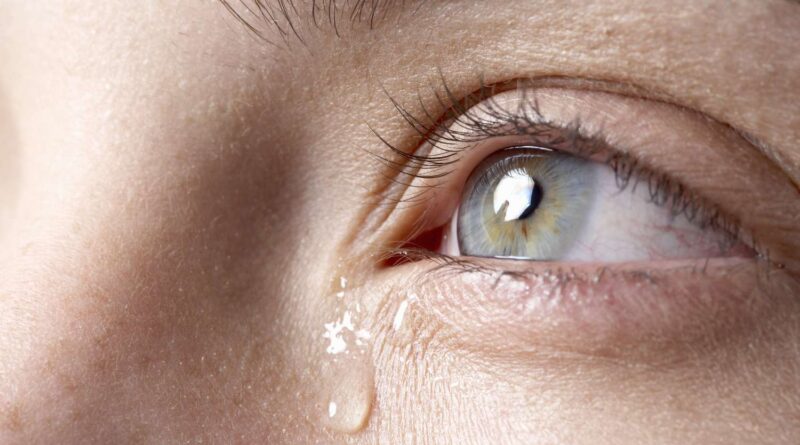Why Do People Shed Tears? The Vital Elements Of Tears You Should Know About
Why do people shed tears? It’s a question that has puzzled and intrigued many since the beginning of time. Tears, those salty droplets that cascade down your cheeks, have a fascinating way of captivating attention. Have you ever wondered why they appear when you least expect them? Why do they well up when emotions overwhelm you, turning them into a waterfall of sentiment?
You might be thinking, “Come on, tears are just tears. They’re just there. What’s the big deal?” Well, did you know that tears are not all the same? There’s a difference between tears of joy, tears of sadness, and even tears of laughter. These precious droplets hold the essence of your emotions and express what words sometimes fail to convey. The meaning of tears in left and right eye can differ, but they communicate a message whose meaning you should know.
If you’re ready to uncover the enigma behind tears, read on. This article explores the science, psychology, and hidden depths of these shimmering drops. Prepare to have your preconceptions challenged and your curiosity satisfied. Let’s dive in.
A Biological Perspective Of Tears
Tears are not just drops of water rolling down your cheeks; they are a fascinating biological phenomenon. Understanding the biology behind tears can provide insights into their purpose and significance in human life.
a. Anatomy Of Tears
Within your eyes lie glands responsible for tear production. These tear glands release a complex mixture of water, electrolytes, proteins, and other components that make up tears. They work tirelessly to keep your eyes moist and protected.
You can think of your tear glands as tiny heroes, tirelessly working behind the scenes to keep your eyes in optimal condition. Like well-oiled machines, they produce tears that are crucial in maintaining eye health.
b. Types Of Tears
Tears serve different purposes depending on the situation. There are three main types of tears: basal, reflex, and emotional.
Basal tears: These tears are continually produced to lubricate and protect your eyes. They ensure your eyes stay moisturized, preventing discomfort and maintaining clear vision.
Reflex tears: Have you ever experienced watery eyes when chopping onions or being exposed to smoke or dust? These are reflex tears, your body’s natural defense mechanism to flush out irritants and protect your eyes from harm.
Emotional tears: These tears are unique to humans and are closely linked to our feelings and emotions. They can be shed in response to joy, sadness, grief, and other emotional states. For example, if you’re watching a heartwarming movie that tugs at your emotions, tears will likely well up in your eyes and trickle down your cheeks.
The Psychological Aspect Of Emotional Tears
- Communication and Bonding: Crying is not just a personal experience but a means of communication. Shedding tears can convey your emotional states to others, enabling them to understand and empathize with your feelings. It deepens connections and fosters emotional support within relationships.
- Empathy-Related Tears: Tears are not limited to expressing your emotions; they can also be triggered when you witness others’ emotions. Consider a moment when you comforted a close friend who was going through a tough time. It’s probable that as their tears mingled with yours, a profound bond formed between you.
The Science Behind Crying
Beyond the emotional and psychological aspects, crying has a scientific basis rooted in neurochemistry.
Neurochemical Aspects of Tears
When you shed tears, your body releases neurotransmitters and hormones that contribute to your emotional state. These include endorphins, oxytocin, and stress hormones like cortisol.
The Link Between Tears And Endorphins
Endorphins, often referred to as “feel-good” chemicals, are released when you cry. They can alleviate pain, improve mood, and create a sense of well-being. For example, when you shed tears of joy while watching a loved one achieve a long-held dream, endorphins flood your system, creating a euphoric sensation.
Psychological Benefits Of Crying
- Cathartic Effect And Emotional Regulation
Crying can provide a cathartic release, allowing you to process and regulate your emotions. It acts as an emotional outlet, helping you to cope with overwhelming feelings and find emotional balance.
You can think of it as an emotional pressure valve. When pressure builds up, allowing tears to flow helps release emotional tension, providing relief and restoring equilibrium.
- Better Mental and Physical Well-being
Research suggests that crying can positively affect your mental and physical health. It can reduce stress, improve mood, and enhance overall well-being. Just as a rainstorm washes away the dirt and brings freshness to the air, shedding tears can cleanse your emotional state and bring a renewed sense of clarity and resilience.
Cultural And Societal Perspectives On Tears
Tears hold cultural and societal significance, with variations in attitudes and interpretations across different cultures and historical contexts.
- Cultural Variations in Attitudes Towards Tears
Cultures differ in their acceptance and expression of tears. Some societies view tears as a sign of vulnerability, while others perceive them as a display of strength and authenticity.
Gender norms often influence the acceptability of crying. In some cultures, men may be discouraged from shedding tears due to societal expectations of masculinity, while women may be encouraged to express their emotions more openly.
- Historical And Artistic Depictions Of Tears
- Tears in Literature, Paintings, And Films
Throughout history, tears have been a subject of fascination in various art forms. They have been depicted as symbols of sorrow, joy, longing, and profound human experiences.
- Symbolism And Interpretation of Tears
Tears carry symbolic meanings that vary across cultures and contexts. They can represent purity, vulnerability, healing, or even transformation.
Consider the famous painting “The Weeping Woman” by Pablo Picasso. The tears streaming down her face symbolize her anguish and serve as a poignant representation of the universal emotions humans encounter.
The Meaning Of Tears In The Left And Right Eye
Have you ever wondered if there is any significance to tears appearing in the left and the right eye? While some may dismiss it as mere coincidence, others find meaning in this phenomenon.
In some cultures, it is believed that tears shed from the left eye symbolize sadness, while tears from the right eye represent joy or relief. These interpretations are deeply rooted in cultural traditions and folklore.
Spiritually, tears from the left eye are associated with releasing negative emotions or grieving. In contrast, tears from the right eye are linked to positive emotions, spiritual growth, or receiving blessings.
Wrapping Up
Tears are a multifaceted phenomenon encompassing biology, psychology, culture, and personal experiences. Rather than seeking a single explanation or definition, embracing the complexity of tears will enable you to appreciate their depth and significance in your life. Tears are not simply drops of water; they manifest your emotions, the bridge between souls, and the physical release of your deepest feelings.
The next time tears well up in your eyes, remember the anatomy of tears, their psychological impact, the science behind their existence, and their diverse cultural interpretations. And most importantly, tears are not something to be ashamed of or hidden away, but to be embraced as a natural and profound expression of being human.


![How to solve [pii_email_929d7a5973b835a83b2b] error?](https://tweetpapers.com/wp-content/uploads/2021/09/app-tips-microsoft-outlook-00-hero-26-2-390x205.png)

